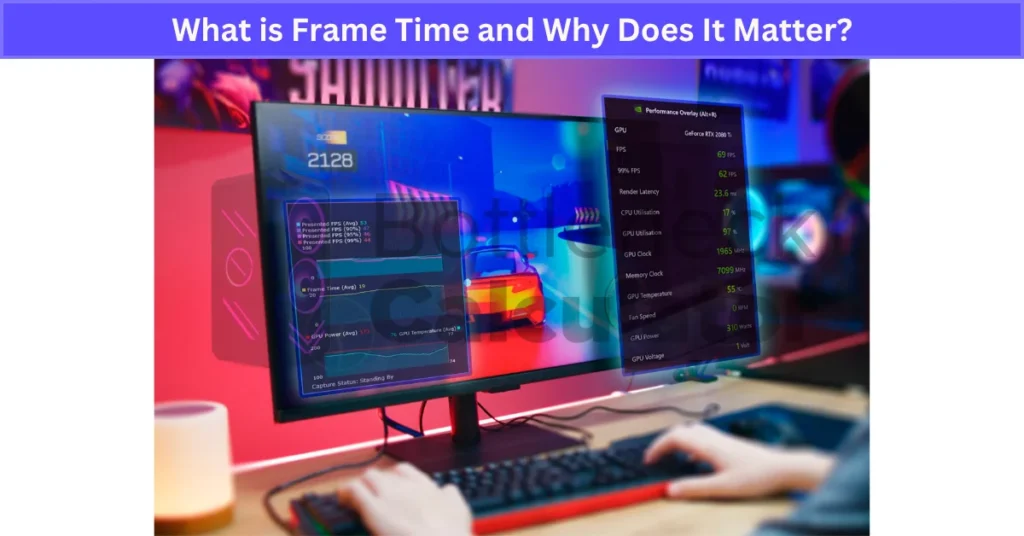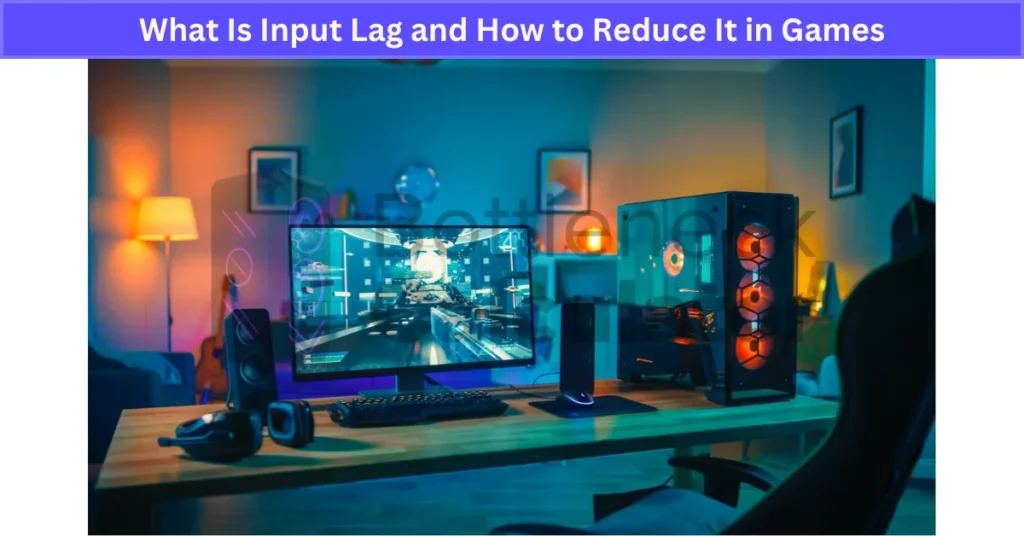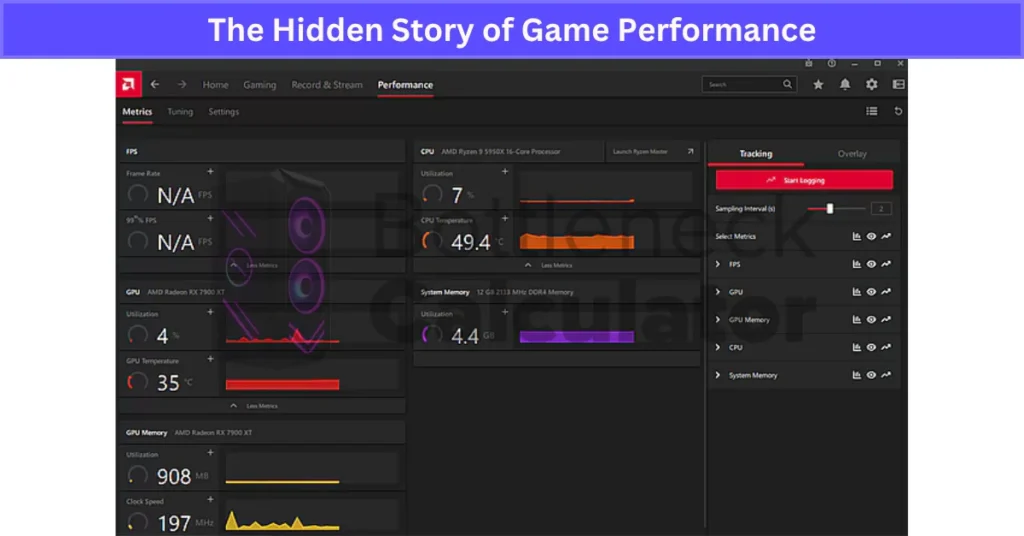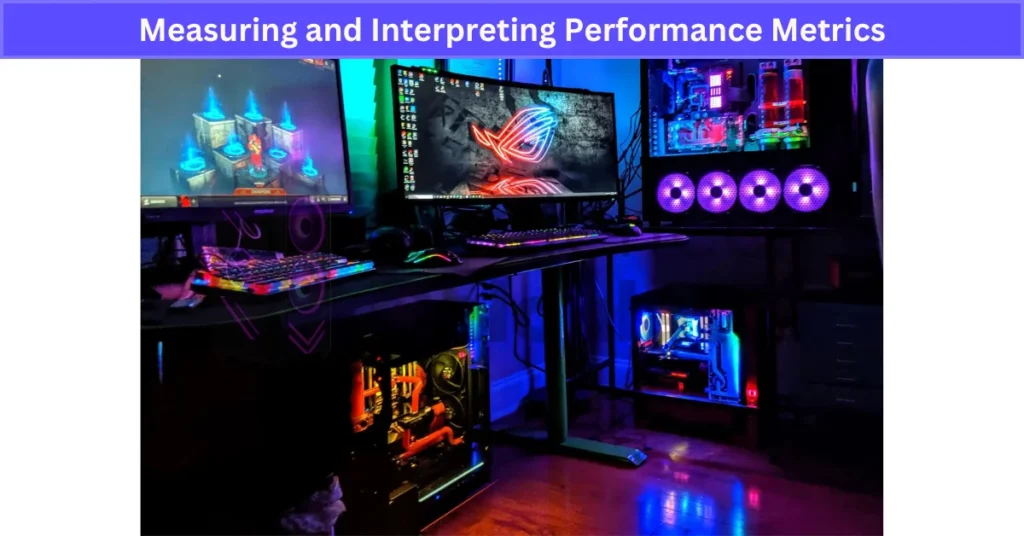Gaming Performance Metrics Explained: Looking Beyond FPS
Last updated:
I get it—everyone talks about FPS first. But honestly, FPS is just one piece of the puzzle. If I want games to feel right, I always check a few other gaming performance metrics too. That’s how I spot what’s holding my game back.
- FPS (Frames Per Second): The number everyone knows. Higher is better, but it’s not everything.
- Frame Time: Shows how long each frame takes. Smooth frame time means smooth gameplay.
- 1%/0.1% Lows: Tell me when those rare drops or stutters happen, even if my average FPS looks good.
- Input Lag: Measures delay between pressing a key and seeing it happen. Low input lag measurement is key for shooters.
- CPU & GPU Usage: I use CPU GPU usage monitoring to see if one part is maxed out. Helps me find bottlenecks.
- Temperature Monitoring: High temps? My PC might slow down or crash. Always check temps.
- RAM & VRAM Usage: RAM VRAM stats help me spot when I’m running out. That’s when games start to stutter or crash.
I’ve found that tracking all these stats—not just FPS—really helps me figure out what needs fixing. I use tools like MSI Afterburner or HWInfo for a quick on-screen overlay. Makes PC game benchmarks easy to understand. If you want smooth games, keep an eye on these numbers!
If you want to learn how screen resolution can create a bottleneck and affect your FPS, check out this detailed guide: Can Screen Resolution Cause a PC Bottleneck?
Key Game Metrics to Measure PC Performance
I used to think FPS was all I needed, but I learned pretty fast that it’s just the start. If you want to really understand your PC game performance metrics, you’ve got to watch a few other numbers too. Here’s what I check every time:
- Average FPS: Tells me if things look smooth, but sometimes hides real problems.
- 1% / 0.1% Lows: Show those rare, ugly frame drops. If these are way lower than my average, that’s where stutter comes from.
- Frame Time Consistency: Spikes mean my game feels jerky. Frame time vs FPS? I’d say frame time matters more for real smoothness.
- Input Lag: If my actions feel slow, this is usually why. Input lag gaming problems show up most in shooters.
- CPU & GPU Usage: If one stays at 99-100%, I know I’ve hit my PC’s limit.
- Temperature: Keeps my hardware safe and speedy. Too hot? My PC slows down or crashes.
- RAM / VRAM Usage: Low memory causes stutter, long loads, or random crashes. I always use RAM VRAM monitoring to keep an eye on it.
I always run tools like Afterburner or HWInfo to watch these live. If you only check FPS, you’re missing half the story!
What is Frame Time and Why Does It Matter?
Frame time in gaming is just how long it takes to show one picture (frame) on your screen, usually measured in milliseconds. So if I’m running a game at 60 FPS, each frame takes about 16.67 ms to pop up. You can figure this out by doing 1 divided by your FPS. For example, if I see a frame time of 15.6 ms, my game is moving super smooth—each picture flashes by fast enough that I never notice any lag.
But here’s the big thing: it’s not just about the number being low. I want my frame time to be steady, too. If frame times jump around—like one is 12 ms, then 30 ms, then back to 14 ms—that’s when I start to feel stutter, even if my FPS looks high. That’s why frame time gaming checks matter way more than just staring at an FPS counter.
Frame time vs FPS? FPS tells me how many frames I get per second, but frame rendering time shows if my game actually feels smooth. For real smooth gameplay measurement and stutter prevention, low and steady frame times are key.

I always use tools like RTSS or CapFrameX to see a real-time graph of my frame times. A flat line means smooth. A spiky line? That’s trouble.
If you want your games to feel right, keep an eye on both FPS and frame time!
FPS Stability and Variability: What They Mean for Smooth Gaming
FPS stability in gaming means your frame rate stays steady while you play. If I get a solid 60 FPS with barely any drops, that’s high stability—my game looks and feels smooth. But if FPS jumps all over the place, even if my average is high, I’ll see choppy pictures and might even miss actions. That’s where frame rate variability comes in.
The FPS variability index measures how much my frame rate bounces around. Big swings mean more chance of microstutter, which can mess up the smooth gameplay metrics I care about. I’ve learned that stable FPS is way better than just aiming for a high number.
For real smoothness, I always watch both my average FPS and the variability index. I use overlays to catch FPS swings, especially in busy scenes. That’s how I spot FPS stutter causes and keep my games running nice and steady.
What Is Input Lag and How to Reduce It in Games
Input lag in gaming is the time between when I hit a button and when I see my action on screen. If there’s a big delay, it feels slow and frustrating—especially in fast games.
For competitive play, low input lag means I can react quicker. Good input lag for gaming should be less than a single screen refresh—so on a 100Hz monitor, under 10ms is ideal. If I want to reduce input delay, here’s what works for me:
- I always turn on “Game Mode” on my monitor or TV. That kills off extra image processing that adds lag.
- I use wired mice and keyboards instead of wireless. Wired always feels snappier for me.
- In supported games, I enable NVIDIA Reflex or AMD Anti-Lag. These options cut lag right at the source.

Extra tip: I turn off things like “motion smoothing” or “dynamic contrast” in monitor settings. Those just slow things down.
If you’re missing shots or the game feels off, test your input lag. For first-person shooter games, especially in competitive scenes, it makes a huge difference!
Network Metrics: Ping, Packet Loss, and Jitter in Gaming
Online games aren’t just about fast downloads. The real trick is having solid network metrics gaming stats. Here’s what I always check:
- Ping: This shows how long it takes for my data to reach the game server and come back. Low gaming ping (like 20–40 ms) is best—fast reactions. High ping? That’s when I feel lag or my shots register late.
- Packet Loss: This is the percent of data that gets lost on the way. Even a little packet loss in online games can make me stutter, rubber-band, or even disconnect. It’s a real headache.
- Jitter: This measures how much the ping bounces around. High jitter measurement means random lag spikes and makes my game feel unpredictable.
If I ever feel like my shots or moves are delayed, I check these numbers first. Wired Ethernet always gives me lower ping, packet loss, and jitter than Wi-Fi. Keeping an eye on these stats helps with troubleshooting online lag and keeps my games feeling smooth.
Why You Should Look Beyond FPS: The Hidden Story of Game Performance
I used to think hitting a big FPS number meant my game was running perfectly. But honestly, that’s just the surface. FPS is the stat everyone sees, but it can hide a lot of hidden gaming performance issues that make a game feel weird—even when the number looks great.
Hidden Problems Lurking Behind High FPS
I’ve had times where my FPS showed 120+, but the game still felt choppy. That’s because frame time spikes were sneaking in. So, even if my average FPS is high, if the frame time isn’t steady, I feel stutter and micro-freezes. Another one? Input lag. I’ve lost more than one match because there was a delay from my clicks to what happened on screen—FPS didn’t warn me at all.
What You Miss by Only Chasing FPS
If I only focus on FPS, I might totally miss what’s really holding back my PC. Maybe my CPU is maxed out while my new GPU is just coasting. Or maybe my RAM is full, so things stutter during big fights. Focusing just on FPS has led me into “upgrade traps” before—like when I spent money on a better graphics card, but the real problem was my old CPU or not enough RAM. Classic mistake.

Why Holistic Monitoring Makes Everything Smoother
When I started tracking more than just FPS—looking at frame time vs FPS, 1% lows, input lag, and network stats—I actually fixed stuff that used to bug me for months. Using all these optimizing game performance metrics made my games feel way smoother, and honestly, I started enjoying gaming more. No more guessing, just clear FPS troubleshooting tips that worked.
My Quick Tip:
Even the best gaming PCs can have frame pacing problems, but you only see it on a frame time graph. So, I always check that graph before I call my setup “perfect.”
Measuring and Interpreting Performance Metrics
Essential Tools for Measuring Game Performance Metrics
If I really want to know what’s happening in my games, I can’t just guess. That’s why I use dedicated game performance measurement tools—they show all the hidden numbers in real time.
- MSI Afterburner:
This is my go-to for almost everything. MSI Afterburner gaming lets me track FPS, frame time, and both CPU and GPU usage, all in a customizable overlay while I play. I can move stuff around, change the colors, and even see temps and fan speed. It works with just about any hardware, so I recommend it to everyone who wants easy stats without stopping the game. - NVIDIA FrameView:
If you have an Nvidia graphics card, this is a great choice. NVIDIA FrameView does FPS, frame times, and even power use and efficiency. I find it super useful when I’m tweaking settings or testing if a hardware upgrade actually makes a difference. It’s best for Nvidia users, since it’s designed to give deep info on their cards. - OSRTT (Open-Source Response Time Tool):
This one’s for folks who want to get serious about input lag testing. OSRTT is built for measuring the time between hitting a key or button and seeing the action on screen. If I’m trying to tune my setup for competitive games, this tool gives me the edge.

My tip? Most of these tools can run in an overlay, so I never have to alt-tab out of my game to see the numbers. I even keep a screenshot of my stats for later, especially if I’m troubleshooting.
I always try out more than one tool to get the best software for FPS tracking, plus a full look at frame times and system response. Combining tools means I get the most accurate read on my setup—and my games feel smoother because of it.
How to Interpret Game Performance Metrics
Just knowing your numbers isn’t enough—what really matters is how I interpret game metrics to fix or improve how my games run. I’ve learned that paying attention to the right patterns tells me exactly how bottlenecks can affect FPS and create performance issues even when everything else seems fine.
- Frame Time Graphs:
When I see a flat, steady line on a frame time analysis, I know my gameplay will feel buttery smooth. If that line starts spiking up and down, that’s stutter. Even if my FPS looks high, spikes in frame rendering time mean something’s not right—could be background apps, overheating, or a hardware mismatch. When I catch those spikes, I dig deeper to see what changed at that moment. - CPU & GPU Usage:
This is my main trick for CPU GPU bottleneck detection. If my CPU stays maxed out (99–100%) while the GPU is chilling, it’s a CPU bottleneck. That means my processor can’t keep up, so I’d either lower CPU-heavy settings or look at an upgrade. But if my GPU is stuck at 100% and my CPU is low, then it’s the graphics card that’s limiting my FPS. That tells me it’s time to lower graphics settings or maybe save up for a new GPU. - Network Metrics:
For online games, I always check network metrics gaming stats. High ping, jitter, or packet loss? That’s usually the cause of lag or weird disconnects. If I spot those, my first move is to switch to a wired connection or try a different game server. Sometimes just moving closer to my router helps a lot.

Extra tip: I save logs or take screenshots of these stats every time I tweak settings or swap hardware. Later, I compare them to see what actually made things better or worse. Super helpful for real performance troubleshooting tips.
Real-World Examples: Performance Metrics in Popular Games
I’ve always found that looking at real game performance comparison data helps me understand what’s actually going on with my setup. Seeing FPS benchmark results and frame time real games side by side gives me clues on what’s holding back my system—and what upgrades or tweaks will really help.
Here’s a quick game-by-game breakdown I use to spot patterns:
| Game | Avg FPS (Standard/High-End) | Frame Time Stability | Main Bottleneck | Notable Metric |
|---|---|---|---|---|
| CS:GO (Esports FPS) | 200+ / 400+ | Very stable | Usually CPU | Input lag is super noticeable |
| Cyberpunk 2077 (Open World) | 40–60 / 90–120 | Spiky on weaker cards | Mostly GPU, then VRAM | VRAM usage (8GB+ needed for Ultra) |
| The Witcher 3 (RPG) | 60–90 / 120+ | Smooth if GPU is strong | GPU or CPU (crowds) | Stutters with low RAM or old CPU |
| Valorant (Shooter) | 120+ / 400+ | Super stable | Usually CPU | Low input lag gaming—great for aim |
| Microsoft Flight Simulator (Sim) | 30–45 / 60–70 | Can be uneven | CPU first, then GPU | Network metrics (ping/jitter) count |
- CS:GO: This game is super easy on the GPU but hits my CPU hard, especially if I’m trying to max out FPS. Frame time stays stable on almost any setup, but input lag can make a huge difference in clutch moments. I always tweak my settings for the lowest input lag here.
- Cyberpunk 2077: Even with a top GPU, I see big frame time spikes if I run Ultra settings without enough VRAM. I notice stutters on cards with less than 8GB. Frame time charts help me spot when things go choppy. GPU and VRAM are the main limits.
- The Witcher 3: Usually, my GPU works the hardest unless I’m in big towns, where the CPU can slow things down. Low RAM also causes trouble—more so than just low FPS. Stable frame time equals smooth sword fights.
- Valorant: FPS is sky-high, and frame time is rock steady if my CPU is decent. It’s a good example of a game where input lag and network metrics matter more than just FPS. Tiny stutters throw off my aim, so I keep everything tuned for consistency.
- Microsoft Flight Simulator: Even on new hardware, this one pushes my CPU and GPU. I get low average FPS, and sometimes frame times are uneven, especially in busy areas or with a multi-monitor setup. What surprised me is how much network metrics gaming (like ping and jitter) matter—slow internet can cause delays loading scenery.
This kind of direct comparison is why I check more than just FPS. Each game stresses different parts of my PC. By using a full performance metrics chart, I catch CPU vs GPU bottleneck examples and know what to tweak. In the end, comparing all these stats is the smartest way to troubleshoot and get the best out of every game I play.
Real User Fixes & Community-Backed Solutions
r/buildapc
A Reddit user asked about the downsides of having FPS higher than their monitor’s refresh rate, especially in competitive gaming. Responses explained that while uncapped FPS can reduce input lag and improve responsiveness, it may cause screen tearing and increased power consumption. Many preferred a stable FPS matching their monitor’s refresh rate for smoothness, but others noted higher FPS is generally beneficial despite possible visual artifacts. The consensus was that disabling sync technologies like V-Sync or G-Sync can minimize input lag, though at the cost of some tearing.
Quora
We found a Quora discussion about whether running games beyond 60 FPS offers a noticeable visual difference. Experts explained that while technically higher FPS means smoother motion, the perceptible improvement decreases as FPS rises—for example, the jump from 30 to 60 FPS is much more noticeable than from 120 to 240 FPS. Many said the difference depends on your monitor’s refresh rate, with higher refresh rates making it easier to see improvements. Overall, most agree that beyond around 200 FPS, gains become very subtle and less impactful to gameplay experience.
Final Verdict
When it comes to gaming performance, focusing only on FPS doesn’t give you the full picture. Other metrics like frame time, input lag, CPU/GPU usage, and network quality play big roles in how smooth and responsive your games actually feel. Paying attention to all these numbers helps you spot what’s really holding back your PC and avoid wasting money on upgrades that won’t fix the problem.
Using tools like MSI Afterburner or NVIDIA FrameView makes it easy to monitor these stats in real time. Whether you’re playing fast shooters or big open-world games, tracking multiple performance metrics is the best way to get the most from your setup and enjoy gaming without surprises or frustration.
Faq’s
How much FPS is good for AAA games?
In modern gaming, AAA games are expected to run at a minimum of 60 FPS for smooth gameplay. Thanks to technologies like AI upscaling, hitting this frame rate has become easier, ensuring a better overall gaming experience.
Does FPS matter in competitive gaming?
Having a higher K/D ratio means a player wins more fights and secures more victories. Studies, including those shared by NVIDIA’s Tony Tamasi, show a clear link between higher FPS and better K/D ratios. In competitive gaming, smoother frame rates often give players a real edge.
What controls FPS in games?
Your graphics card, CPU, and RAM all team up to create each frame by handling shapes, textures, lighting, and effects. When one part gets overloaded—like the CPU asking the GPU to render too many objects at once—it causes a bottleneck, making your PC produce fewer frames per second.
What is meant by FPS games?
An FPS, or first-person shooter, is a video game focused on gun and weapon combat, played from the main character’s viewpoint, letting players see and experience the action through their eyes.

